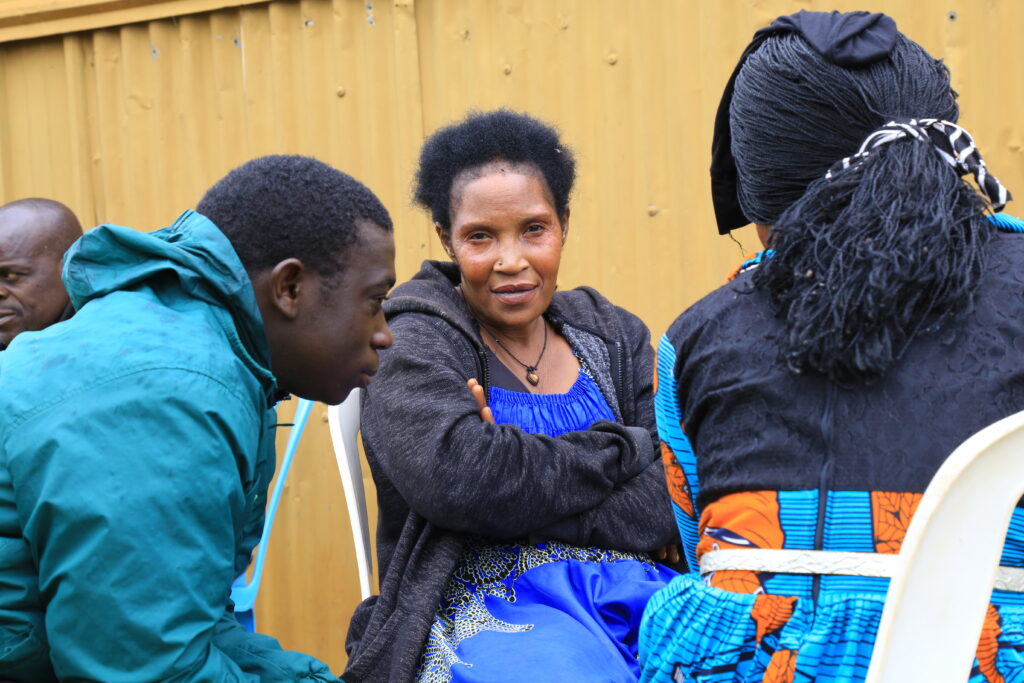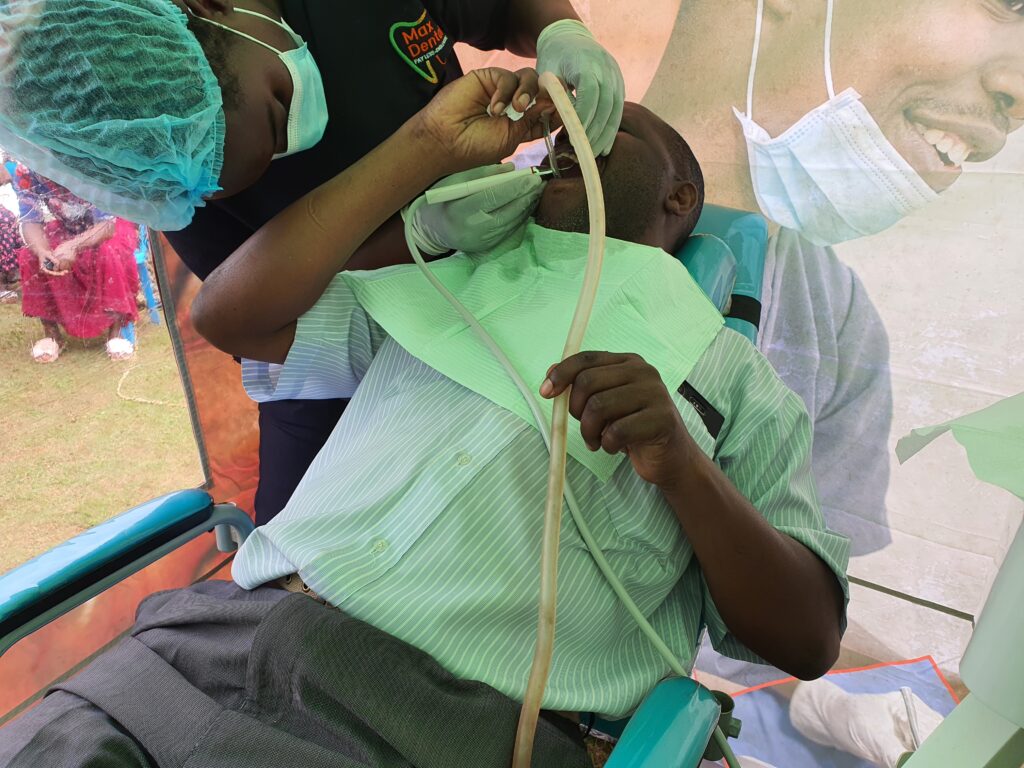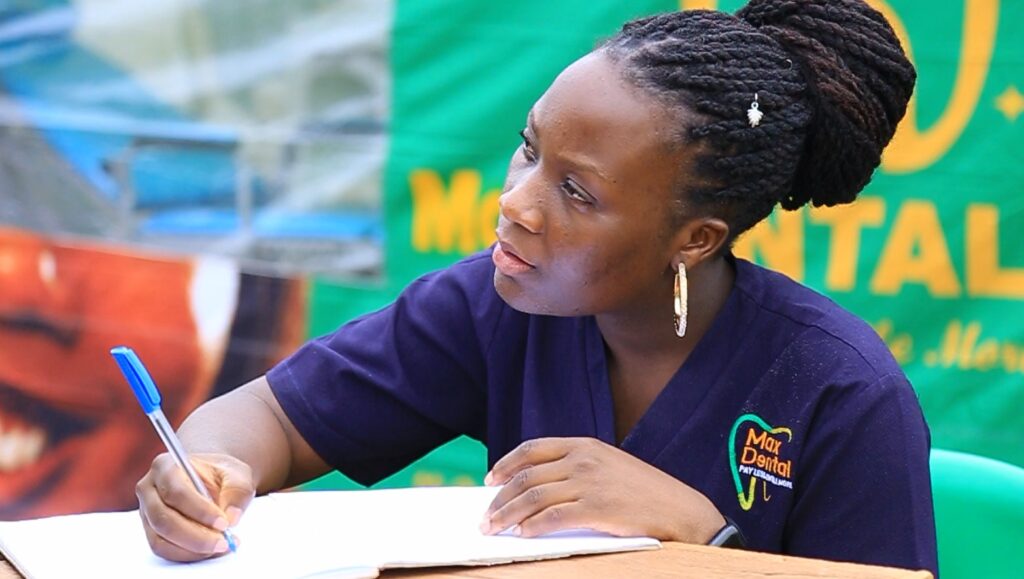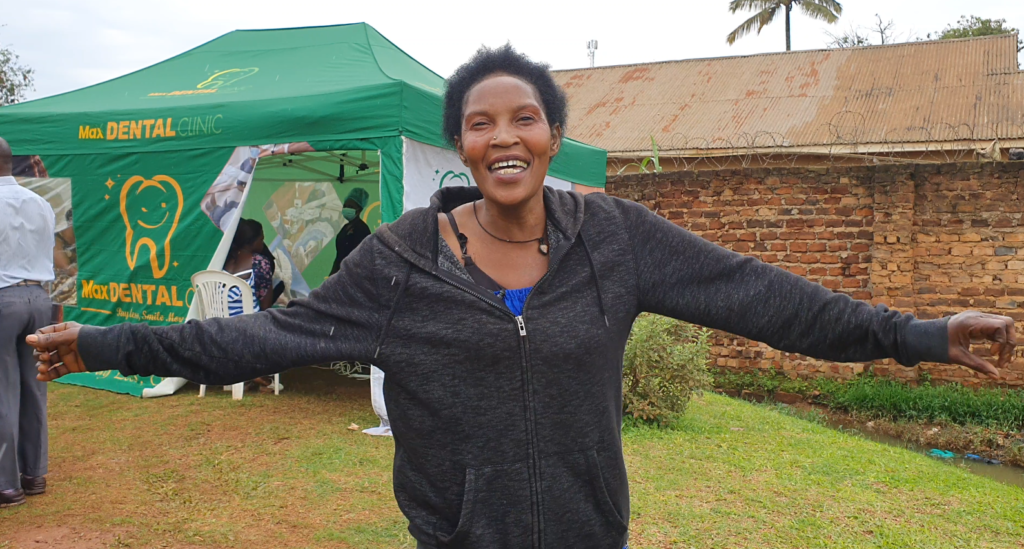Annet Nabulya, 52, lives with the vivid memory of a day in March 1995, when she strolled into a dental clinic with excruciating pain in her jaws, and walked out as she came.
Nabulya had visited Mulago National Referral Hospital in Kampala the previous evening. Owing to the complicated nature of her case, a nurse at the facility recommended a specialist at a renowned dental private clinic in Wandegeya, a suburb neighboring the hospital.
“It was a sleepless night for me because of the pain, but I hoped I was to get better after seeing the specialist … it was a false hope,” Nabulya narrates.
After examination, the specialist recommended surgery, at a cost of Uganda shillings 800,000 about $220. Nabulya instead asked for alternatives that would numb the pain and walked out.
“Where do you think I could get that money? My income is so minimal to afford that much … I had nothing to do,” she explains reflectively.
From that time, now over two decades, Nabulya had never gotten a chance to get proper dental care.

Annet Nabulya together with other community members at a dental treatment camp. Photo by Rhonet Atwiine.
-A plan on the trail-
Dental healthcare access gap in Uganda’s health structure is part of a broader general care challenge. The National Health Strategic Plan calls for a dentistry at every Health Center IV, but this has yet to become a reality.
Services at Health Center IVs and district hospitals are hindered by sector funding challenges.
According to the National Oral Health Policy (2007), the Ministry of Health (MoH) operates on a low budgetary allocation of approximately 9% of the GDP, which is not adequate for optimal service delivery in the country. Of this, the direct oral health care budgetary allocation is less than 0.1%.
This resonates with the fact that where they have been available, the shortages of materials, supplies, equipment and human resource have made them malfunctional.
“The dental care package at public health facilities is limited to simple extractions, simple fillings, cleanings, oral health education among others. This means that if you want care beyond the package provided at the district level, you can get it in private facilities,” says Juliet Katumba, the Principle Dental Surgeon at the Ministry of Health.
Patients are thus pushed to seek services from private actors, where simple surgeries cost as much as $200 (about 750,000 Uganda shillings).

Many like Nabulya have given up, and some resorted to traditional oral therapy methods.
“I have had tooth cavities for a long period and tried what I could to seek medical attention to no avail. And I know of very many other people in my community,” Nabulya says as she endured the long queue at an oral outreach camp in Natete, just outside Kampala.
Nabulya was among the first group to arrive at the treatment center to undertake dental examinations, offered freely by an association of dentists monthly to people in Kampala’s informal settlements like Natete.
This community-led model is being pioneered by Max Dental, a consortium of volunteer dentists, using modern dental technology, to promote early diagnosis, and raise dental awareness to reduce dental emergencies in low-income communities.
“As dentists, we find it crucial for people in slum areas to have access to quality oral health services. Therefore, we come together and bring dental services here and in every slum around the city,” says Nicholas Kalinge, who coordinates the outreach.
Max Dental operates a chain of clinics offering these services at subsidized costs. The money collected at the pharmacy is then challenged into treatment camps.
Kalinge says the model is designed in such a way that people who can afford subsidized services at the clinic pay for those who can’t afford in low-resource communities
“Our outreaches mainly target low-income earners because we believe that these are the people with most dental problems, but they cannot afford it. So we come down in the communities to ensure both those who can and can’t afford the services are in a position to have good oral health.” He explains.

Connection for better lives
The outreach is organized in structured communities like schools, mosques, and churches. These social groups are used as points of shared identity for easy community mobilization.
This identity also allows patients to be treated with privacy and dignity.
“To mobilize people to come to this dental clinic, we advertise the camp in church on Sundays. And for those who do not attend church services, they get the information through our mobilizer who moves around the community announcing using a megaphone,” says Reverend Ssemanda Emmanuel, the Vicar St. Samuel Church of Uganda, Nateete who mobilized for the clinic.
The most prevalent cases are dental caries, the most common noncommunicable disease worldwide which is avoidable.
Recent surveys have shown that the majority of Ugandans in rural and low-income communities lack awareness on oral health, and a few of them are seeking oral health services for any oral health condition. This, doubled with the cost of treatment, long waiting time and distance to the health facility are the barriers.
The organization is thus relying on the same groups to mobilize communities for oral hygiene and sensitization and “help them avoid catastrophic expenditure,” according to Racheal Namuyanja the administrative assistant at Max Dental.
“We screen, teach, and treat with the idea of catching a disease at an early stage when it is still cheaper to treat,” says Namuyanja.

Max Dental Administrative Assistant, Racheal Namuyanja takes patients’ records during a community outreach in the settlements of Natete, outside Kampala. Photo by Phillip Mwebaza.
After a long wait, Nabulya managed to get her surgery and oral health awareness. But she believes this is not sufficient by itself for her community.
According to government data, Uganda has a dentist-patient ratio of 1:120000 compared to the recommended World Health Organization (WHO) recommended 1:7500.
These figures have accelerated the rise in the number of unattended to dental cases. According to a 2022 report by Uganda Dental Association (UDA), an umbrella organization that brings together all dentists, dental gum diseases are the most common at 95 percent and if not managed well, the condition progresses to Periodontitis which is the breakdown of the structures and subsequent teeth shaking.
This expert attributed have the surge in dental cases to excessive consumption of artificial sugars together with lack of information on oral care. with bottle feeding among toddlers.
“I had poor oral hygiene allowing other oral diseases to develop. But now my teeth have been cleaned and cemented. I feel so happy.” Nabulya with a beaming smile and excitement.
However, Nabulya says since her community’s dental care needs are beyond outreach, there is a need for the government to join hands and bring other free medical services nearer to people in slums, “because we are sick and poor”.
“The government should invest money in such innovations which extend dental and other health care services to low-income settings. Free clinics for eye testing, malaria, and other diseases should also be put in place because public hospitals are crowded and private clinics are expensive,” she concludes.

Annet Nabulya pictured in celebration after receiving oral care during a dental outreach in Natete outside Kampala. Photo by Rhonet Atwiine.
According to Commissioner Katumba, the government is engrossed in improving the human resource capacity to extend the services beyond the “basic package”.
“We are having doctors trained as professional surgeons and placing them to different hospitals … we are advancing beyond the first dental surgery in most district hospitals,” Katumba notes.
Since 2018, the Max Dental team has done screening, tooth extraction, cementing, replacement, cleaning, and doctor’s consultation and have empowered over 10 slum communities, that have received over 18000 patient services over the years, at monthly outreach clinics in slums such as Nankulabye, Bwaise, Kisenyi, Katanga, Kamwokya, and Nateete, among others.
As the number of camps increase every single year, the number of dental challenges reduce by the day according to Kalinge.
“Every outreach target between 70-100 people. People are now doing routine dental check-ups. It helps you solve the problem before it worsens.”
Statistics shared by Kalinge show that when we started these outreaches, 49-50% of people could come to the clinic to extract teeth, that number has now reduced to 13%, thanks to sensitization.
“After providing oral education, the percentage of people extracting their teeth has reduced and we owe this to the aggressive oral hygiene campaign we have from 49% to 13%,” Nicholas Kalinge says.
© 2022 - Media Challenge Initiative | All Rights Reserved .


